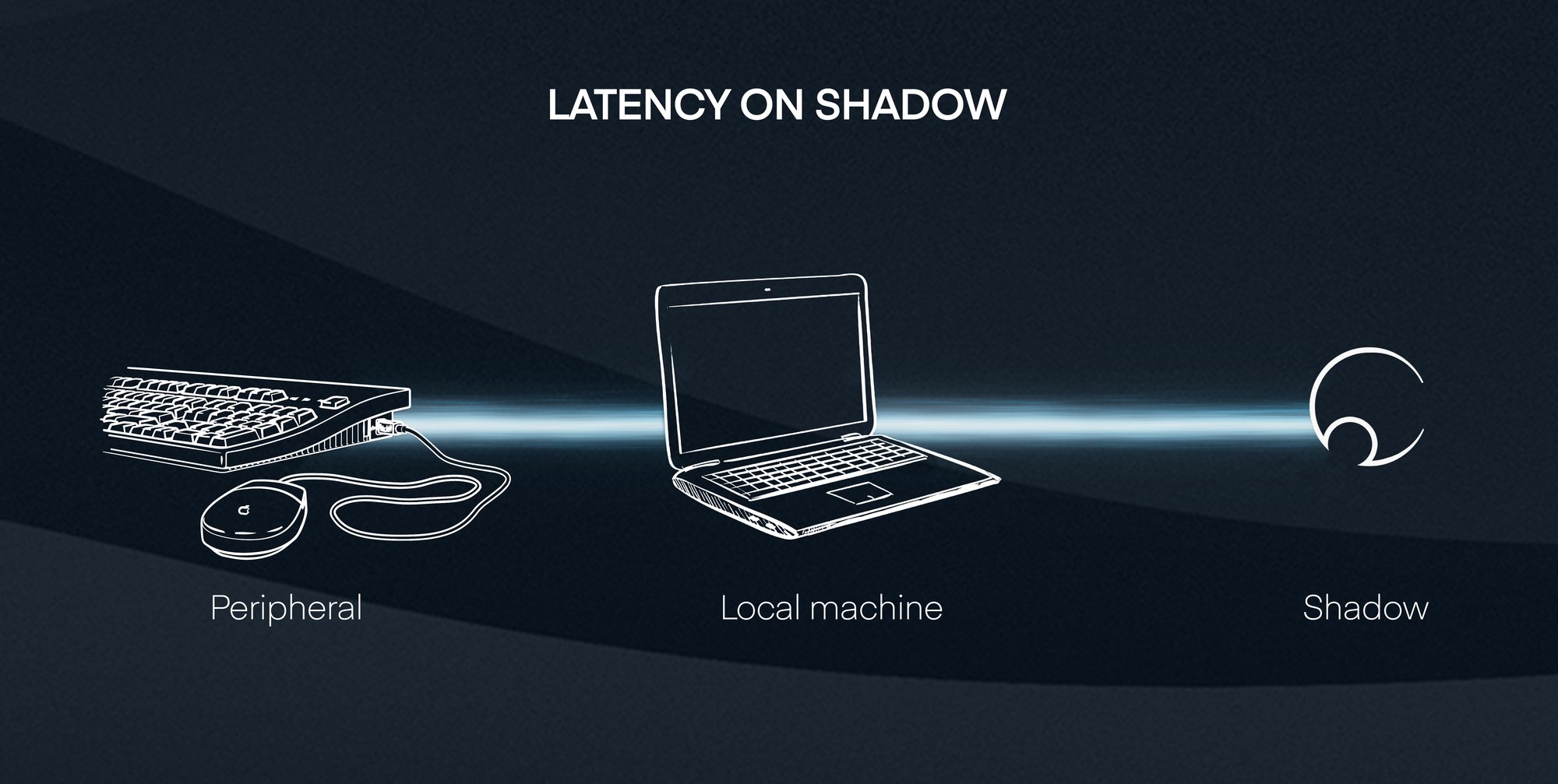At Shadow, we get asked a lot of questions about latency. Do our subscribers experience it? Does running your games through a cloud computer make it more difficult to avoid? And - importantly - how do we go about fixing it?

We understand why this is such a big concern for our community. There’s nothing more frustrating than being behind in a game - particularly when you’re playing online, where just a little bit of lag can determine whether you cinch that win or suffer a loss.
It’s a big deal, then, and you can be sure that we’re treating it like one, too. Read on to discover where this issue comes from, the small steps you can take now to reduce it and what we’re doing to make lag a thing of the past... forever.
Let’s talk numbers. On a regular PC, average latency doesn’t exceed 30 milliseconds (ms), which is imperceptible to the naked eye. It only starts to become a problem when it takes between 80 - 100ms for your images to display properly.

But how does this relate to Shadow? Well - simply put - when you game through Shadow, you’re still gaming on a PC… albeit a really sexy one. Therefore, it experiences all of the potential latency issues a local PC would, as well as those that are specific to cloud technology. Here are the main ones.
You know how you can play your games across any device with Shadow? Well - as magical as that is - the process of doing that (in which we transform images from your Shadow computer into the video that you stream on your devices) actually adds about 10ms of additional latency. Optimizing this is right at the top of our list of priorities - stay posted for updates.

Depending on how far you are from a Shadow data center and the quality of your internet connection, you may experience more or less lag.
If you have a fiber connection, you shouldn’t receive more than an additional 12ms of latency on average (based on user stats from France). On the other hand, if you’re using an ADSL connection, the average additional lag is much higher.
If you experience a lot of lag and are using an ADSL connection when cloud gaming, it’d be savvy to switch to fiber, which offers a much more reliable experience.
Finally, your device itself needs to register Shadow’s signal, which increases latency. Fortunately, this is only by a couple of milliseconds on devices that are less than three years old - though it ranges between five - 10ms for those that are older.
What are we doing to fix this, then? Gregory Gelly, at Shadow, explains:
"Outside of your home network, it’s also the device on which you’re running Shadow that has an impact on latency. The older a machine is, the less likely it’ll be able to quickly decode Shadow’s video stream. To fix that, we’re currently working on optimizing older tech (as well as Shadow’s encoding phase), to offer a better overall experience on every device.”
Using Shadow Ghost is another great way to decrease lag. It's already familiar with Shadow’s coding, the additional latency you’ll experience when streaming through it is almost infinitesimal. And who said ghosts had to be scary?
From compiling your thoughts to running experiments, our developers have been very busy identifying and eliminating the latency issues you may experience through Shadow. It’s one of our main missions, and we’re constantly optimizing our hardware, tweaking our service and creating innovative solutions to beat the lag beast.

One of the main innovations we’re focusing on is a "smoothing" technology. This will anticipate possible packet losses (where data fails to reach its destination) to ensure that your cloud gaming sessions are smooth, regardless of the quality of your connection.
We’re working hard to make sure that Shadow is the best that it can be. To learn more about what we’ve been up to, see our recent Copperfield update, and make sure to keep checking back for further news on our developments. We look forward to hearing your thoughts over on Discord!
All the figures we’ve expressed in this article are measured on our current service using the standard H264 compression.












